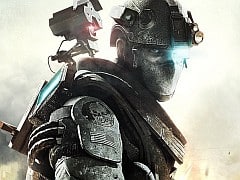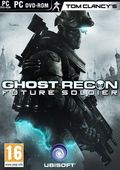You can trust VideoGamer. Our team of gaming experts spend hours testing and reviewing the latest games, to ensure you're reading the most comprehensive guide possible. Rest assured, all imagery and advice is unique and original. Check out how we test and review games here
Perhaps appropriately for a game that involves high-tech cloaking devices, we’ve not seen a lot of Ghost Recon: Future Soldier since E3 last year.
In this industry, a prolonged stay of absence is often interpreted as a bad sign, a problem hardly helped by the recent news that the game’s release date was about to be shifted yet again. Still, when the game popped up for a Ubisoft preview event earlier this month, the game appeared to be in reasonably good health.
While last year’s E3 demo portrayed Future Soldier as something bordering on a straight action shooter, the more recent showing marked a partial return to the series’ slower-paced, stealthier roots. Four missions were available for testing, including a tactical assault on a heavily-defended lumberyard, an all-out gun battle amid jammed traffic, and a protracted sequence in which the player silently follows a warlord through his camp.
Two mechanics stand out as being immediately notable, the first being the improbably-named tactical grenades (“What’s that thing over there?” “No idea – LET’S THROW A GRENADE AT IT!”). We’ve seen these in previous demonstrations: you lob one in the general direction of the enemy, then it sends out a pulse wave which highlights any hostiles nearby. They work quite well, and after a while they stop feeling as daft as they initially seem, although it seems as if you can get similar results through generous use of your X-ray vision, which is actually powered by magnets (how do they work?).
The second important feature is your ability to perform sync shots, which come across as a more sociable version of the Mark n’ Execute setup from Splinter Cell: Conviction. I say “sociable”, because it involves everyone in your squad joining in; it’s less successful as a social lubricant for the OpFor, who invariably end up spraying their brains all over the nearest wall. In a nutshell, you mark up to four targets for death, then trigger a simultaneous kill by either holding down a bumper, or by taking one of the shots yourself. If you’re only targeting three guards (or fewer), you don’t even need to pull the trigger.
From the four levels i’ve played, the sync shot is extremely effective – perhaps too much so. Given that your buddies never miss (unlike me), it starts to feel a bit like a “win button”, especially as you’re often able to fire right through softer parts of the scenery. All the same, it’s undeniably fun to use, and I suspect that that your scouting gadgets benefit from it: when your careful reconnaissance results in a synchronous four-way headshot, you’ll feel rewarded for your efforts.
There’s no doubt that the game is at its best when its putting these lethal tools at your disposal, and when the level design expands to give you a bit more freedom with regards to your angle of approach. The early, more linear stages feel less interesting, but then these missions are essentially there to teach players the basics; the fifth mission, the aforementioned lumber yard attack, is far more open than the stages that precede it, so let’s hope that sets a trend for the rest of the game.
Future Soldier also fares less well well it’s trying to be a straight-up action shooter. There’s nothing inherently wrong with the approach taken, but it feels far more derivative than the stealth-driven bits. On a similar note, there’s an on-rails helicopter chase sequence that smacks of CoD; again, it’s handled well enough, but it immediately invites comparison to every similar sequence we’ve seen in recent years – and let’s face it, there’s no shortage of candidates.
Still, I feel that the game put in a solid showing at its most recent appearance. The big bangs and helicopter attacks of the previous demo may have been E3 demanded, in Ubisoft’s eyes at least, but the more restrained elements of the new material are far more encouraging; what remains to be seen is how much of the campaign falls into either category. And in any eventuality, Ubi needs to get this game out sooner rather than later.
Tom Clancy’s Ghost Recon: Future Soldier
- Platform(s): PC, PlayStation 3, Wii, Xbox 360
- Genre(s): Action







